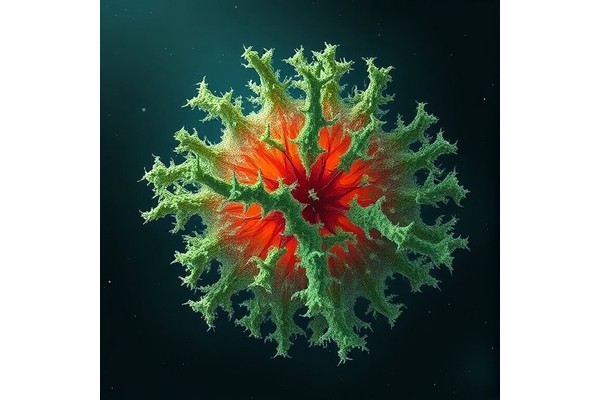Huskisson Investigates Gut Health in Red Pandas: A Deep Dive into Digestive Well-being
Huskisson Investigates Gut Health in Red Pandas: A Deep Dive into Digestive Well-being

Sarah Huskisson, a promising doctoral candidate in Environmental Science and Policy at George Mason University, has embarked on an innovative research journey that delves into the gut health of the red panda, a species widely recognized for its uniqueness and endangered status. Funded by the Association of Zoos and Aquariums’ Animal Care and Wellbeing Grants Fund, Huskisson’s study, titled “A Novel Characterization of Red Panda (Ailurus spp.) Gut Health using Short-Chain Fatty Acid and Stress Hormone Concentrations,” aims to shed light on crucial health indicators that could significantly impact conservation efforts for this elusive animal.
The study’s principal focus revolves around the analysis of red panda fecal samples, a vital subject in understanding the health of these creatures. Short-chain fatty acids (SCFAs) and stress hormone concentrations serve as key variables in this research. SCFAs, produced by the fermentation of dietary fibers, play an essential role in maintaining gut health, influencing metabolic functions, and even modulating immune responses. By examining these factors, the research intends to uncover insight into the physiological well-being of red pandas.
Elizabeth Freeman, an esteemed Associate Professor at the School of Integrative Studies, is entrusted with the role of Huskisson’s advisor throughout this endeavor. Freeman’s expertise in integrative studies aligns perfectly with the multidisciplinary nature of this research, bridging environmental science and animal health to explore avenues for enhancing red panda conservation through informed husbandry practices.
Huskisson’s work does not stand in isolation; it explores the interplay between diet and gut health in red pandas. The research seeks to address how various husbandry variables can influence hormone levels and SCFA concentrations. Understanding these dynamics is essential for developing effective management strategies in conservation breeding programs, where the ultimate goal is to bolster red panda populations and secure a sustainable future for the species.
The urgency of this investigation cannot be overstated, as red pandas face numerous threats in the wild, including habitat loss and climate change. By unraveling the complexities of their gut health, Huskisson’s research stands to contribute significantly to the existing body of knowledge, providing tools and data that conservationists urgently need to protect and manage these animals more effectively.
Moreover, this study is set against a backdrop of heightened interest in zoo animal care practices. The funding received—$2,310 from the Association of Zoos and Aquariums—affirms a commitment to advancing animal care and wellbeing, reflecting the broader movement within the zoological community to prioritize the health and welfare of species in human care. As more zoos engage in research-driven animal care, the implications of such studies extend beyond red pandas, offering insights applicable to a wide range of species facing similar challenges.
Scheduled to commence in January 2025 and concluding in January 2027, the timeline for this research allows for comprehensive data collection and analysis. The duration emphasizes the importance of longitudinal studies in discerning patterns and establishing reliable correlations between diet, SCFA levels, and stress hormones. This approach ensures that the findings will be robust and applicable, supporting the overarching goals of conservation breeding programs dedicated to the survival of pediatric species.
Additionally, Huskisson’s research represents a pioneering approach to understanding the health indicators of red pandas. The integration of hormonal analysis into the study of gut health is relatively novel in animal science, particularly for a species as charismatic and endangered as the red panda. In adopting this integrative perspective, the research champions a holistic view of animal wellbeing, one that encompasses physiological, dietary, and environmental interactions.
The collaborative spirit governing this study, underscored by the partnership between Huskisson and Freeman, speaks volumes about the current landscape of animal health research. It reveals a keenness to draw on diverse academic backgrounds and methods to tackle complex biological questions. As the study unfolds, it has the potential to inspire similar research endeavors targeting other endangered species, thereby proliferating knowledge that could reshape conservation practices.
In essence, the implications of this research extend beyond academia. They touch on real-world conservation efforts, influencing policies, management strategies, and public perceptions of not just red pandas but all vulnerable species in need of protection. By integrating scientific inquiry with practical conservation strategies, the study can pave the way for innovative practices that promote biodiversity and sustainable ecosystems.
As Huskinson completes this vital research, the journey toward understanding the intricate relationship between diet, gut health, and the overall wellbeing of red pandas strengthens the arguments for conservation efforts. The allied efforts of academia, zoological institutions, and conservationists can lead to a future where red panda populations flourish, giving hope to an endangered species and setting a precedent for global animal care standards.
Through this groundbreaking study, Huskisson not only contributes valuable knowledge to the scientific realm but also plays an integral role in the broader ecological narrative concerning endangered species conservation. The promise of enhanced red panda management strategies driven by empirical data represents a significant step in the ongoing fight to protect our planet’s biodiversity, ensuring that future generations can witness these magnificent animals in a thriving natural habitat.
Subject of Research: Red panda gut health with a focus on short-chain fatty acids and stress hormone concentrations.
Article Title: A Novel Characterization of Red Panda (Ailurus spp.) Gut Health using Short-Chain Fatty Acid and Stress Hormone Concentrations
News Publication Date: Not available
Web References: Not available
References: Not available
Image Credits: Not available
Keywords: Red panda, gut health, short-chain fatty acids, conservation, animal welfare, environmental science, zoo research, veterinary medicine.
Groundbreaking Implant Aids in Pinpointing Effective Treatments for Multiple Sclerosis in Mouse Models
Next PostTexas McCombs Faculty Research Achieves Record-Breaking Milestone
U.S. Funding Cut for Tuberculosis May Cause Up to 2.2 Million More Deaths by 2030, Study Warns







